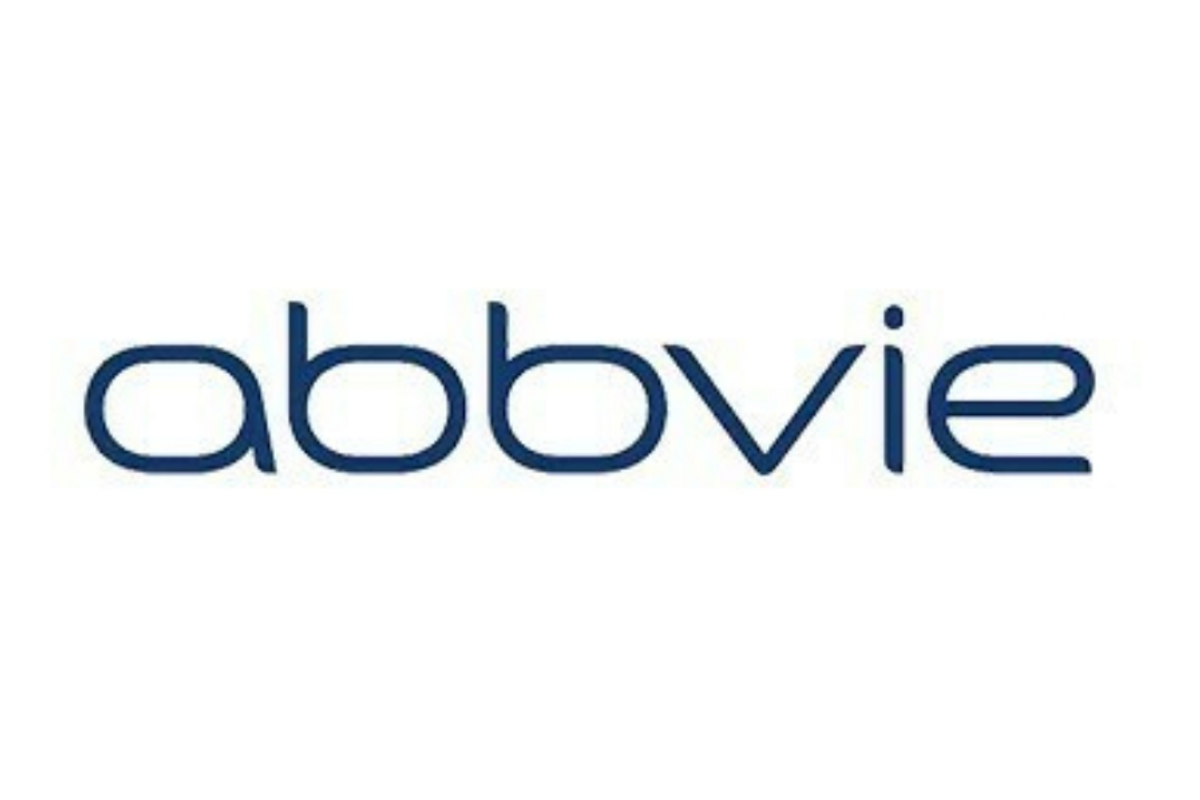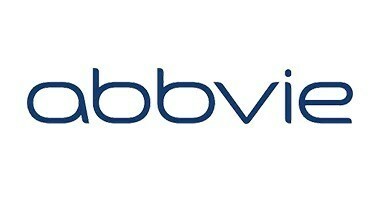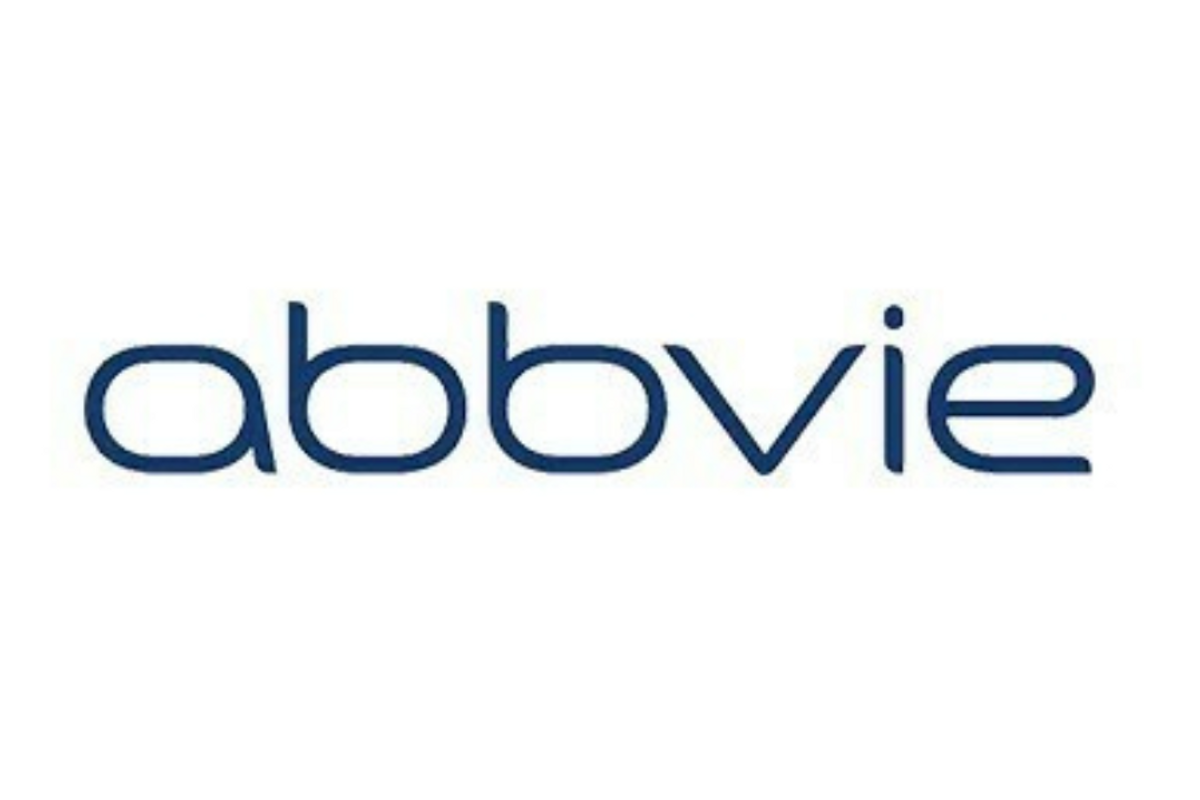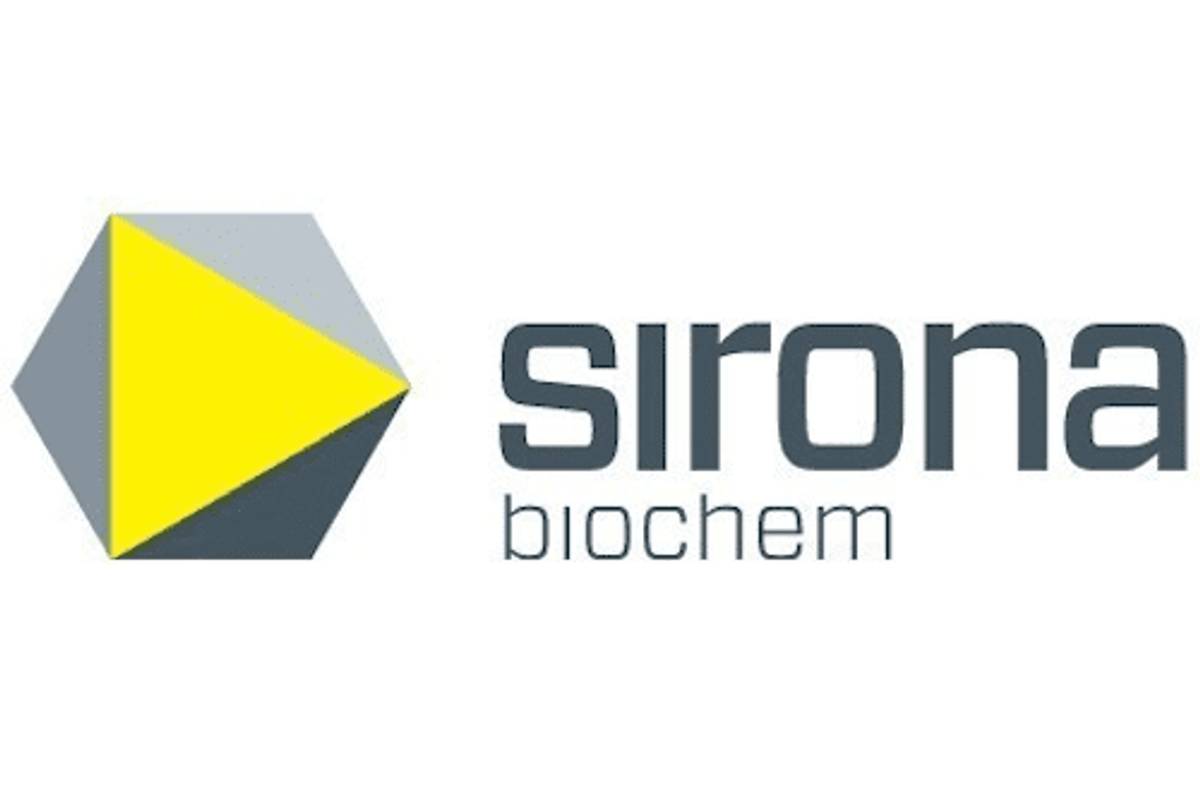--Results from the PROGRESS Phase 3 trial on atogepant for the preventive treatment of chronic migraine will be showcased as an oral presentation
--Breadth of research underscores AbbVie's leadership and commitment to people living with migraine
ABBVie (NYSE: ABBV) today announced that new data from its migraine portfolio will be presented at the Migraine Trust International Symposium (MTIS) 2022, taking place in London from September 8-11. A total of 13 abstracts, including 4 oral presentations, will cover a wide range of studies across ABBVie's migraine portfolio, including data on onabotulinumtoxinA, atogepant, and ubrogepant.
"Migraine is a complex, chronic neurological disease with attacks that are often incapacitating for patients living with this debilitating disease. Our current migraine treatments demonstrate our dedication to addressing the unmet needs of migraine patients – and we continue to strive for science that makes a difference," said Mudra Kapoor, M.D., vice president, neuroscience, global medical affairs, AbbVie. "We look forward to presenting robust data spanning our growing migraine portfolio at MTIS 2022 and furthering our goal of making a remarkable impact on patients' lives."
At the meeting, researchers will present the Phase 3 PROGRESS study results on atogepant for the preventive treatment of chronic migraine, as well as data from a retrospective claims analysis study on real-world persistence and costs among patients with chronic migraine treated with onabotulinumtoxinA or a calcitonin gene–related peptide monoclonal antibody (CGRP mAbs).
AbbVie will also present global results from the chronic migraine epidemiology and outcomes - international (CaMEO-I) study, evaluating the use of preventive medications for migraine and potential treatment gaps among individuals who are candidates for preventive treatment.
In addition to the data presented, AbbVie will host a medical symposium on Friday, September 9 from 12:00-13:00 British Standard Time (BST) titled "Evolving Faces of Migraine" discussing the evolution of the migraine treatment landscape through evidence-based medicine, guidelines, consensus statements and the impact on patients.
AbbVie abstracts presented at the MTIS 2022 are outlined below.
Key AbbVie Abstracts at MTIS 2022 | |
Abstract Title | Abstract Details & Time |
Disease State | |
Characterizing Gaps in Preventive Treatment of Migraine: Global Results from the CaMEO-International Study | Saturday, September 10 Oral Presentation |
Impact of Preventive Medication Failure in Quality of Life and Functioning Among Individuals with Migraine and Preventive Treatment Failure in France, Germany, Italy, and Spain and the United Kingdom: Need for Effective Preventive Treatment | Saturday, September 10 Oral Presentation |
Chronic Migraine Epidemiology and Outcomes – International (CaMEO-I) Study: Methods and Global Findings for Diagnosis Rates and Care | Friday, September 9 Digital Poster Presentation |
Characterizing the Pre- and Post-Headache Phases of Migraine: Interim Results from the CaMEO-International Study (US Sample) | Friday, September 9 Digital Poster Presentation |
Characterizing Pre-headache (Prodrome) Features of Migraine Attacks: Results from the CaMEO Study | Friday, September 9 Digital Poster Presentation |
Atogepant | |
Atogepant for the Preventive Treatment of Chronic Migraine: Results from the PROGRESS Phase 3 Trial | Saturday, September 10 16:00-17:30 BST Oral Presentation |
Effect of Atogepant on the Activity Impairment in Migraine–Diary and Work Productivity and Activity Impairment Questionnaire in a 12-Week, Double-blind, Randomized, Phase 3 (PROGRESS) Trial for Preventive Treatment of Chronic Migraine | Thursday, September 8 - Saturday, September 10 Poster |
Effect of Atogepant on Migraine-Specific Quality of Life Questionnaire and Headache Impact Test-6 in a 12-Week, Double-blind, Randomized, Phase 3 (PROGRESS) Trial for Preventive Treatment of Chronic Migraine | Thursday, September 8 - Saturday, September 10 Poster |
Early Onset of Efficacy with Atogepant for the Preventive Treatment of Chronic Migraine: Results from the PROGRESS Trial | Friday, September 9 Digital Poster Presentation |
Efficacy of Oral Atogepant in People with Chronic Migraine with and without Acute Medication Overuse: Results from the PROGRESS Trial | Friday, September 9 Digital Poster Presentation |
Treatment Responder Rates of Oral Atogepant for the Preventive Treatment of Chronic Migraine: Results from the PROGRESS Trial | Friday, September 9 Digital Poster Presentation |
OnabotulinumtoxinA | |
Real-World Persistence and Costs Among Patients with Chronic Migraine Treated with OnabotulinumtoxinA or CGRP mAbs: A Retrospective Claims Analysis Study | Saturday, September 10 Oral Presentation |
Ubrogepant | |
Participant-Reported Normal Function and Satisfaction Are Maintained with Long-term Intermittent Use of Ubrogepant | Thursday, September 8 - Saturday, September 10 Poster |
The MTIS 2022 symposium will take place in-person and the full program can be found here .
About Atogepant
Atogepant is an orally administered, CGRP receptor antagonist (gepant) specifically developed for the preventive treatment of migraine. CGRP and its receptors are expressed in regions of the nervous system associated with migraine pathophysiology. Studies have shown that CGRP levels are elevated during migraine attacks and selective CGRP receptor antagonists confer clinical benefit in migraine. The use of atogepant in migraine is not approved in the United Kingdom or European Union and its safety and efficacy have not been evaluated.
U.S. Indications and Important Safety Information about QULIPTA™ (atogepant)
QULIPTA is a prescription medicine used for the preventive treatment of episodic migraine in adults.
IMPORTANT SAFETY INFORMATION
Before taking QULIPTA™ (atogepant) tablets, tell your healthcare provider about all your medical conditions, including if you:
- Have kidney problems or are on dialysis
- Have liver problems
- Are pregnant or plan to become pregnant. It is not known if QULIPTA will harm your unborn baby
- Are breastfeeding or plan to breastfeed. It is not known if QULIPTA passes into your breast milk. Talk to your healthcare provider about the best way to feed your baby while taking QULIPTA
Tell your healthcare provider about all the medicines you take , including prescription and over-the-counter medicines, vitamins, and herbal supplements. QULIPTA may affect the way other medicines work, and other medicines may affect how QULIPTA works. Your healthcare provider may need to change the dose of QULIPTA when taken with certain other medicines.
The most common side effects of QULIPTA are nausea, constipation, and tiredness. These are not all the possible side effects of QULIPTA.
You are encouraged to report negative side effects of prescription drugs to the FDA. Visit www.fda.gov/medwatch or call 1-800-FDA-1088.
If you are having difficulty paying for your medicine, AbbVie may be able to help. Visit AbbVie.com/myAbbVieAssist to learn more.
Please see full Prescribing Information .
Globally, prescribing information varies; refer to the individual country product label for complete information.
About BOTOX ® (onabotulinumtoxinA)
BOTOX ® was first approved by the FDA in 1989 for two rare eye muscle disorders – blepharospasm and strabismus in adults. Today, BOTOX ® is FDA-approved for 12 therapeutic indications, including chronic migraine, overactive bladder, leakage of urine (incontinence) due to overactive bladder caused by a neurologic condition in adults and in pediatric patients five years of age and older, cervical dystonia, adult and pediatric spasticity, and severe underarm sweating (axillary hyperhidrosis). Botulinum toxin units are not interchangeable from one product to another; doses recommended in Allergan Units are different from other botulinum toxin preparations.
U.S. Indications and Important Safety Information about BOTOX ® (onabotulinumtoxinA)
INDICATIONS
BOTOX ® (onabotulinumtoxinA) is a prescription medicine that is injected into muscles and used:
- To treat overactive bladder symptoms such as a strong need to urinate with leaking or wetting accidents (urge urinary incontinence), a strong need to urinate right away (urgency), and urinating often (frequency) in adults 18 years and older when another type of medicine (anticholinergic) does not work well enough or cannot be taken
- To treat leakage of urine (incontinence) in adults 18 years and older with overactive bladder due to a neurologic disease when another type of medicine (anticholinergic) does not work well enough or cannot be taken
- To treat overactive bladder due to a neurologic disease in children 5 years of age and older when another type of medicine (anticholinergic) does not work well enough or cannot be taken
- To prevent headaches in adults with chronic migraine who have 15 or more days each month with headache lasting 4 or more hours each day in people 18 years and older
- To treat increased muscle stiffness in people 2 years of age and older with spasticity
- To treat the abnormal head position and neck pain that happens with cervical dystonia (CD) in people 16 years and older
- To treat certain types of eye muscle problems (strabismus) or abnormal spasm of the eyelids (blepharospasm) in people 12 years of age and older
BOTOX is also injected into the skin to treat the symptoms of severe underarm sweating (severe primary axillary hyperhidrosis) when medicines used on the skin (topical) do not work well enough in people 18 years and older.
It is not known whether BOTOX is safe and effective to prevent headaches in patients with migraine who have 14 or fewer headache days each month (episodic migraine).
BOTOX has not been shown to help people perform task-specific functions with their upper limbs or increase movement in joints that are permanently fixed in position by stiff muscles.
It is not known whether BOTOX is safe and effective for severe sweating anywhere other than your armpits.
IMPORTANT SAFETY INFORMATION
BOTOX may cause serious side effects that can be life threatening. Get medical help right away if you have any of these problems any time (hours to weeks) after injection of BOTOX:
- Problems swallowing, speaking, or breathing , due to weakening of associated muscles, can be severe and result in loss of life. You are at the highest risk if these problems are preexisting before injection. Swallowing problems may last for several months.
- Spread of toxin effects. The effect of botulinum toxin may affect areas away from the injection site and cause serious symptoms, including loss of strength and all-over muscle weakness; double vision; blurred vision; drooping eyelids; hoarseness or change or loss of voice; trouble saying words clearly; loss of bladder control; trouble breathing; and trouble swallowing.
There has not been a confirmed serious case of spread of toxin effect away from the injection site when BOTOX has been used at the recommended dose to treat chronic migraine, severe underarm sweating, blepharospasm, or strabismus.
BOTOX may cause loss of strength or general muscle weakness, vision problems, or dizziness within hours to weeks of receiving BOTOX. If this happens, do not drive a car, operate machinery, or do other dangerous activities.
Do not receive BOTOX if you are allergic to any of the ingredients in BOTOX (see Medication Guide for ingredients); had an allergic reaction to any other botulinum toxin product such as Myobloc ® (rimabotulinumtoxinB), Dysport ® (abobotulinumtoxinA), or Xeomin ® (incobotulinumtoxinA); have a skin infection at the planned injection site.
Do not receive BOTOX for the treatment of urinary incontinence if you have a urinary tract infection (UTI) or cannot empty your bladder on your own and are not routinely catheterizing. Due to the risk of urinary retention (difficulty fully emptying the bladder), only patients who are willing and able to initiate catheterization posttreatment, if required, should be considered for treatment.
Patients treated for overactive bladder: In clinical trials, 36 of the 552 patients had to self-catheterize for urinary retention following treatment with BOTOX compared to 2 of the 542 treated with placebo. The median duration of postinjection catheterization for these patients treated with BOTOX 100 Units (n = 36) was 63 days (minimum 1 day to maximum 214 days), as compared to a median duration of 11 days (minimum 3 days to maximum 18 days) for patients receiving placebo (n = 2). Patients with diabetes mellitus treated with BOTOX were more likely to develop urinary retention than nondiabetics.
Adult patients treated for overactive bladder due to a neurologic disease: In clinical trials, 30.6% of adult patients (33/108) who were not using clean intermittent catheterization (CIC) prior to injection required catheterization for urinary retention following treatment with BOTOX 200 Units, as compared to 6.7% of patients (7/104) treated with placebo. The median duration of postinjection catheterization for these patients treated with BOTOX 200 Units (n = 33) was 289 days (minimum 1 day to maximum 530 days), as compared to a median duration of 358 days (minimum 2 days to maximum 379 days) for patients receiving placebo (n = 7).
Among adult patients not using CIC at baseline, those with multiple sclerosis were more likely to require CIC postinjection than those with spinal cord injury.
The dose of BOTOX is not the same as, or comparable to, another botulinum toxin product.
Serious and/or immediate allergic reactions have been reported, including itching; rash; red, itchy welts; wheezing; asthma symptoms; dizziness; or feeling faint. Get medical help right away if you experience symptoms; further injection of BOTOX should be discontinued.
Tell your doctor about all your muscle or nerve conditions, such as ALS or Lou Gehrig's disease, myasthenia gravis, or Lambert-Eaton syndrome, as you may be at increased risk of serious side effects, including difficulty swallowing and difficulty breathing from typical doses of BOTOX.
Tell your doctor if you have any breathing-related problems. Your doctor may monitor you for breathing problems during treatment with BOTOX for spasticity or for detrusor overactivity associated with a neurologic condition. The risk of developing lung disease in patients with reduced lung function is increased in patients receiving BOTOX.
Cornea problems have been reported. Cornea (surface of the eye) problems have been reported in some people receiving BOTOX for their blepharospasm, especially in people with certain nerve disorders. BOTOX may cause the eyelids to blink less, which could lead to the surface of the eye being exposed to air more than is usual. Tell your doctor if you experience any problems with your eyes while receiving BOTOX. Your doctor may treat your eyes with drops, ointments, contact lenses, or with an eye patch.
Bleeding behind the eye has been reported. Bleeding behind the eyeball has been reported in some people receiving BOTOX for their strabismus. Tell your doctor if you notice any new visual problems while receiving BOTOX.
Bronchitis and upper respiratory tract infections (common colds) have been reported. Bronchitis was reported more frequently in adults receiving BOTOX for upper limb spasticity. Upper respiratory infections were also reported more frequently in adults with prior breathing-related problems with spasticity. In pediatric patients treated with BOTOX for upper limb spasticity, upper respiratory tract infections were reported more frequently. In pediatric patients treated with BOTOX for lower limb spasticity, upper respiratory tract infections were not reported more frequently than placebo.
Autonomic dysreflexia in patients treated for overactive bladder due to a neurologic disease. Autonomic dysreflexia associated with intradetrusor injections of BOTOX could occur in patients treated for detrusor overactivity associated with a neurologic condition and may require prompt medical therapy. In clinical trials, the incidence of autonomic dysreflexia was greater in adult patients treated with BOTOX 200 Units compared with placebo (1.5% versus 0.4%, respectively). Tell your doctor about all your medical conditions, including if you have or have had bleeding problems; have plans to have surgery; had surgery on your face; have weakness of forehead muscles, trouble raising your eyebrows, drooping eyelids, and any other abnormal facial change; have symptoms of a UTI and are being treated for urinary incontinence (symptoms of a UTI may include pain or burning with urination, frequent urination, or fever); have problems emptying your bladder on your own and are being treated for urinary incontinence; are pregnant or plan to become pregnant (it is not known if BOTOX can harm your unborn baby); are breastfeeding or plan to (it is not known if BOTOX passes into breast milk).
Tell your doctor about all the medicines you take, including prescription and over-the-counter medicines, vitamins, and herbal supplements. Using BOTOX with certain other medicines may cause serious side effects. Do not start any new medicines until you have told your doctor that you have received BOTOX in the past.
Tell your doctor if you received any other botulinum toxin product in the last 4 months; have received injections of botulinum toxin such as Myobloc ® , Dysport ® , or Xeomin ® in the past (tell your doctor exactly which product you received); have recently received an antibiotic by injection; take muscle relaxants; take an allergy or cold medicine; take a sleep medicine; take aspirin-like products or blood thinners.
Other side effects of BOTOX include dry mouth; discomfort or pain at the injection site; tiredness; headache; neck pain; eye problems such as double vision, blurred vision, decreased eyesight, drooping eyelids, swelling of your eyelids, and dry eyes; drooping eyebrows; and upper respiratory tract infection. In adults being treated for urinary incontinence, other side effects include UTI and painful urination. In children being treated for urinary incontinence, other side effects include UTI and bacteria in the urine. In patients being treated for urinary incontinence, another side effect includes the inability to empty your bladder on your own. If you have difficulty fully emptying your bladder on your own after receiving BOTOX, you may need to use disposable self-catheters to empty your bladder up to a few times each day until your bladder is able to start emptying again.
For more information, refer to the Medication Guide or talk with your doctor.
You are encouraged to report negative side effects of prescription drugs to the FDA. Visit www.fda.gov/medwatch or call 1-800-FDA-1088.
If you are having difficulty paying for your medicine, AbbVie may be able to help. Visit AbbVie.com/myAbbVieAssist to learn more.
Please see BOTOX ® full Product Information , including Boxed Warning and Medication Guide .
Globally, prescribing information varies; refer to the individual country product label for complete information.
About UBRELVY ® (Ubrogepant)
UBRELVY ® is an orally administered calcitonin gene-related peptide (CGRP) receptor antagonist (gepant) for the acute treatment of migraine with or without aura in adults that is an option for a wide range of patients who experience migraine attacks. UBRELVY ® directly block CGRP, a protein released during a migraine attack, from binding to its receptors. Ubrogepant is not approved in the UK or European Union.
U.S. Indications and Important Safety Information about UBRELVY ™ (Ubrogepant)
What is UBRELVY ™ (ubrogepant)?
UBRELVY is a prescription medicine used for the acute treatment of migraine attacks with or without aura in adults. UBRELVY is not used to prevent migraine headaches.
IMPORTANT SAFETY INFORMATION
Who should not take UBRELVY (ubrogepant)?
Do not take UBRELVY if you are taking medicines known as strong CYP3A4 inhibitors, such as ketoconazole, clarithromycin, itraconazole.
What should I tell my healthcare provider before taking UBRELVY?
Tell your healthcare provider about all your medical conditions, including if you:
- Have liver problems
- Have kidney problems
- Are pregnant or plan to become pregnant
- Are breastfeeding or plan to breastfeed
Tell your healthcare provider about all the medicines you take , including prescription and over-the-counter medicines, vitamins, and herbal supplements. Your healthcare provider can tell you if it is safe to take UBRELVY with other medicines.
What are the most common side effects of UBRELVY?
The most common side effects are nausea (4%) and sleepiness (3%). These are not all of the possible side effects of UBRELVY.
Please see full Prescribing Information .
Globally, prescribing information varies; refer to the individual country product label for complete information.
About AbbVie in Neuroscience
At AbbVie, our commitment to preserve the personhood of those living with neurological and psychiatric disorders is unwavering. Every challenge in this uncharted territory makes us more determined and drives us harder to discover and deliver solutions for patients, care partners and clinicians. AbbVie's Neuroscience portfolio consists of approved therapies and a robust pipeline in neurological and psychiatric disorders, including Alzheimer's disease, bipolar I disorder, major depressive disorder, migraine, Parkinson's disease, spinal cord injuries, post-stroke spasticity, schizophrenia, stroke and others.
We have a strong investment in neuroscience research, with our Foundational Neuroscience Center in Cambridge, Massachusetts , and our Neuroscience Discovery site in Ludwigshafen, Germany, where our research and resilience in these challenging therapeutic areas is yielding a deeper understanding of the pathophysiology of neurological and psychiatric disorders, and identifying targets for potential disease-modifying therapeutics aimed at making a difference in people's lives.
About AbbVie in Migraine
Impacting one billion people worldwide, migraine is a neurological disease with recurring attacks that causes pain and other disabling symptoms. However, migraine can be treatable. At AbbVie, we are committed to empowering people in their pursuit of migraine freedom. We advance science that enables healthcare providers to care for people impacted across the spectrum of migraine. Through education and partnerships with the migraine community, we strive to help those with migraine navigate barriers to care, access effective treatments and reclaim their lives.
About AbbVie
AbbVie's mission is to discover and deliver innovative medicines that solve serious health issues today and address the medical challenges of tomorrow. We strive to have a remarkable impact on people's lives across several key therapeutic areas: immunology, oncology, neuroscience, eye care, virology, women's health and gastroenterology, in addition to products and services across its Allergan Aesthetics portfolio. For more information about AbbVie, please visit us at www.abbvie.com . Follow @AbbVie on Twitter , Facebook , Instagram , YouTube and LinkedIn .
Forward-Looking Statements
Some statements in this news release are, or may be considered, forward-looking statements for purposes of the Private Securities Litigation Reform Act of 1995. The words "believe," "expect," "anticipate," "project" and similar expressions, among others, generally identify forward-looking statements. AbbVie cautions that these forward-looking statements are subject to risks and uncertainties that may cause actual results to differ materially from those indicated in the forward-looking statements. Such risks and uncertainties include, but are not limited to, failure to realize the expected benefits from AbbVie's acquisition of Allergan plc ("Allergan"), failure to promptly and effectively integrate Allergan's businesses, competition from other products, challenges to intellectual property, difficulties inherent in the research and development process, adverse litigation or government action, changes to laws and regulations applicable to our industry and the impact of public health outbreaks, epidemics or pandemics, such as COVID-19. Additional information about the economic, competitive, governmental, technological and other factors that may affect AbbVie's operations is set forth in Item 1A, "Risk Factors," of AbbVie's 2021 Annual Report on Form 10-K, which has been filed with the Securities and Exchange Commission, as updated by its subsequent Quarterly Reports on Form 10-Q. AbbVie undertakes no obligation to release publicly any revisions to forward-looking statements as a result of subsequent events or developments, except as required by law.
Media: Amber Landis (231) 5576596 | Investors: Liz Shea (847) 935-2211 |
![]() View original content: https://www.prnewswire.com/news-releases/abbvie-to-present-data-from-its-robust-migraine-portfolio-at-the-migraine-trust-international-symposium-2022-301619909.html
View original content: https://www.prnewswire.com/news-releases/abbvie-to-present-data-from-its-robust-migraine-portfolio-at-the-migraine-trust-international-symposium-2022-301619909.html
SOURCE AbbVie






